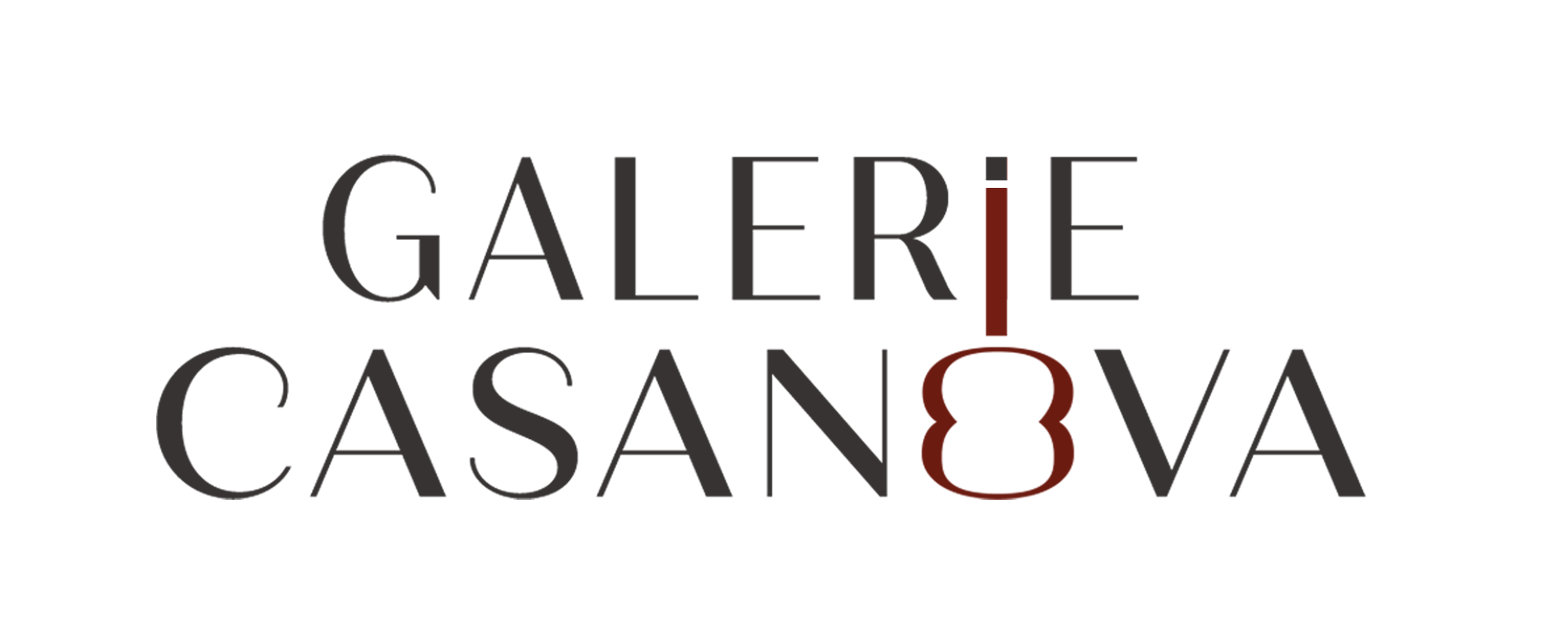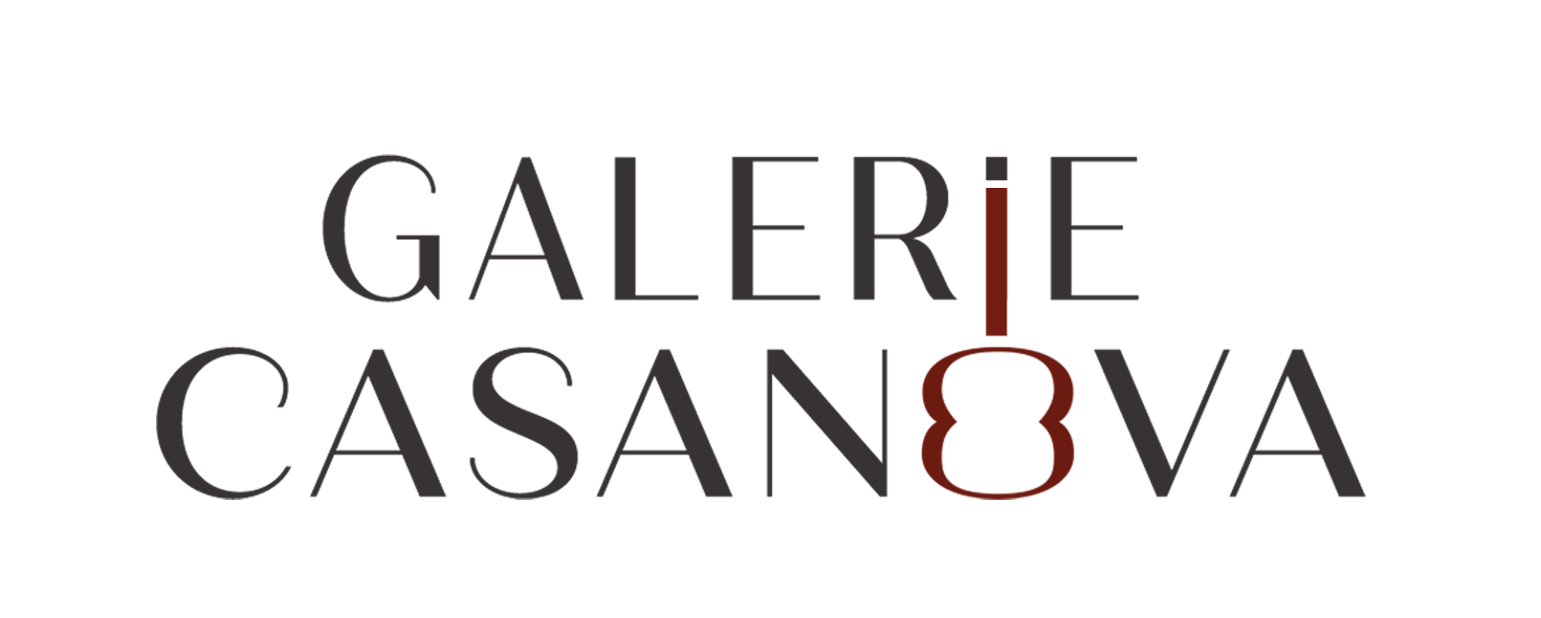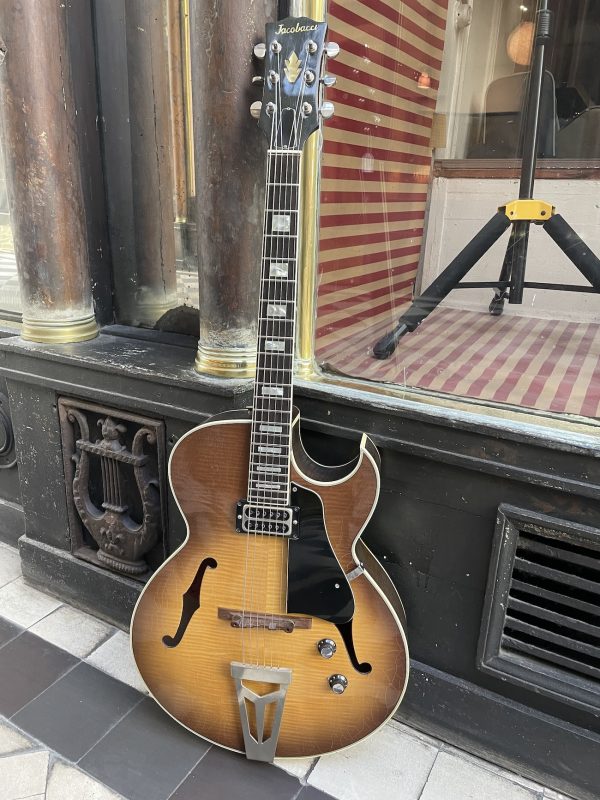Jacobacci
Jacobacci
JACOBACCI
The story of the family and of the Jacobacci mandolin and guitar making workshop is among the most significant of the phenomenon that saw Italian craftsmen come to settle in France to revolutionize – without premeditated intentions – the instrument-building environment. It was in Paris and with Vincent Jacobacci (1895-1975), an anti-fascist militant Italian immigrant from the south, that the adventure of the family business began in 1924 in a modest workshop in Ménilmontant. The production then consisted of standard banjos, mandolins and a few acoustic guitars, including Selmer copies with Favino-style soundholes.
It was one of his twelve children, Roger (1931-2010), who in the 1950s became involved in making electric guitars in collaboration with Stéphane “Steve” Brammer (1910-1983), running a small company called RV , short for Radio Video, a brand found on the RV Tonemaster pickups mounted on the Jacobacci models electric guitars. The Pigalle-based Major Conn store in the 9th arrondissement of Paris was both the sponsor and distributor of the Jacobacci guitars that they certainly bought in full but for a handful from the luthier’s production of the time. If this merchant ensures an exclusive distribution of the production of the Jacobacci workshop, he keeps it just as much under his control. It should be noted that it was Major Conn who entrusted Jacobacci with the design of a line of jazz guitars modeled on the Swedish Levin models in order to offer an alternative that would cost the store less to buy. The influence of Major Conn in Pigalle on small luthiers is such that Jacques Favino will put an end to his collaboration with this brand, which is too mercantile for his taste. From 1956, the Jacobacci guitars typed Levin were thus available from the shop under the name of Major and were available under the names of Royal, Solist, Super Star and Super De Luxe.
In 1959, a newcomer will be the Texas, whose line is openly inspired by the Gibson Les Paul but whose chambered design is just as much a Gretsch Duo Jet or even a seminal Paul Bigsby that Jacobacci or even Steve Brammer had never heard of. You have to believe that good ideas catch on with the times. The Ohio was then introduced in 1960, a solid-body guitar this time, called “extra-flat”! Remember that this argument of extreme thinness was borrowed from the commercial discourse of Fender which used it to extol one of the merits of its Stratocaster at a time when the “extra-thin” watch was also all the rage! Once again, the spirit of the times… This Ohio model is of great importance in the history of guitar making in France: it is linked to groups of young French rockers such as the Chaussettes Noires, the Pirates, as well as the Vautours or even Les Chats Sauvages but especially to the already important figure of Johnny Hallyday (1943-2017) which carried the Ohio model to the top of Santa’s list of many little Frenchies. The house Jacobacci thus takes a step up in rank in the eyes of the whole instrument-building world, even as Major Conn was working to make believe that their guitars were manufactured abroad. It should be noted that the aluminum necks designed by the workshop – and which are the subject of a patent application and subcontracting – appear in 1958 in response to an increased demand for guitars.
The break with the Pigalle brand is consummated when it refuses to review the terms of the partnership. Thus, in 1965, the Jacobacci workshop, bolstered by the arrival of André (1934-1991), brother of Roger, tightened its production on higher quality models as well as on repairs. In 1964, Roger began working for Sacha Distel (1950-2004) of whom cannot be said enough that he was one of the most gifted and renowned jazz musicians of his generation in France and England. His passage to the enemy “yé-yé” earned him to be often brought up albeit in not very flattering terms in a few extra-musical tabloidsl. Be that as it may, it was undoubtedly Sacha Distel who knew how to convince the Jacobacci brothers of the talent they had in their hands and to put their name on their instruments (which up until then had only been branded with the model names). Instruments were initially labeled with the name Rogand – a clumsy contraction of Roger and André -, before proudly displaying the name Jacobacci on the heads of the guitars in the style of Gibson. From then on, from the end of the sixties until the beginning of the nineties, the Jacobacci brothers who are at the helm of the family business will produce around 150 instruments a year for professionals, semi-professionals and enlightened amateurs. Every studio headliner hade his own more or less personalized model: Raymond Jimenez, Pierre Cullaz, Slim Pezin, René Duchossoir, Janik Top, Bernard Paganotti, Sylvain Marc… The Studio model marketed in 1968 – mounted with Golden Sound pickups and then those of Michel Benedetti (1931-2005) – is in a way the initiator of the professional models to come.
The imitations and adaptations of Gibson will then be the most common with first the Benedetti pickups installed on the guitars and then Gibson brand pickups. It is interesting to note that a trip to the United States, during the eighties, with the pickup manufacturer Benedetti and André Duchossoir (1949-2020), the son of the studio musician known as “La Godasse”, and who wrote the very first reference books on the vintage guitar, was particularly inspiring for luthiers. As such, it is to André Duchossoir that we owe the design of the Zébra model by Jacobacci, a creation inspired by the beautiful Gibson Les Paul Junior seen and gleaned on American roads. The closing of the Jacobacci workshop in 1994 left a void in Paris as gaping as the closure of that of Favino rue de Clignancourt ten years earlier or that of Di Mauro rue de la Réunion in 1993. More than a mere chapter in the history of French-Italian lutherie in Paris, it would be the book as a whole that would end along with them.


